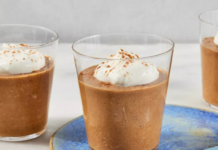Food is about more than just flavour. Just ask French novelist Marcel Proust he wrote a seven-volume novel based on memories triggered from the taste of a madeleine.
Click start to play today’s Spell It, where we note all the other factors into making a dish spectacular. Visit Gulf News Food section for recipes, guides, and lots more.
It’s why a relatively new branch of science, neurogastronomy, came into existence. This field asserts that taste and smell happen primarily in the brain, rather than in the mouth and nose. While our taste buds serve as a pathway, flavour is the sum of everything that our brain brings to the table.
Neurogastronomy originated through studies conducted with chemotherapy patients, who were unable to enjoy food because their sense of taste was neurologically impaired. This science studies everything around the food its shape, colour, and the sound it makes, for instance, and our emotional, cognitive and rational enjoyment of it.
Chefs in the know are taking advantage of neurogastronomy to elevate the dining experience. Renowned British chef Heston Blumenthal, for instance, presents dishes of oysters with headphones and an iPod so that diners can listen to the sound of the sea as they eat.













